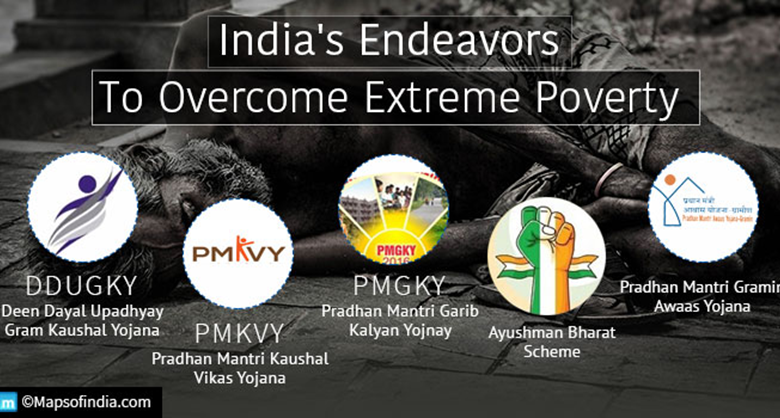Poverty in India: Government Initiatives Which Support Families In Need

News Mania Desk/Agnibeena Ghosh/2nd August 2024
Poverty in India continues to be a significant challenge, despite considerable reductions over the past few decades. The nation’s rapid economic growth since 1991 has been a major factor in this decline. Another key contributor to the decrease in poverty has been the implementation of social welfare programs like the Mahatma Gandhi National Rural Employment Guarantee Act (MGNREGA) and the Midday Meal Scheme in government schools. These initiatives have provided vital support to impoverished populations, helping to uplift millions.
India’s impressive economic growth, exceeding 7% annually over the past 15 years, has been instrumental in pulling millions out of poverty. According to the World Bank, India has halved its poverty rate over the last three decades and has seen substantial improvements in human development outcomes. The World Bank’s report highlights that with continued growth, the elimination of extreme poverty in the next decade is achievable. However, the country’s development path still faces significant challenges.
One of the key areas addressed by the government to combat poverty is housing. Under the PM Awas Yojana-Urban 2.0, an investment of Rs 10 lakh crores aims to meet the housing needs of 1 crore poor and middle-class families. Over the next five years, a central assistance of Rs 2.2 lakh crores will be provided to ensure the success of this initiative. The government has also announced the construction of three crore additional houses in rural and urban areas under the PM Awas Yojana, ensuring that millions of families receive affordable and safe housing.
The Pradhan Mantri Janjatiya Unnat Gram Abhiyan is another crucial initiative aimed at the socio-economic upliftment of tribal communities. This program seeks to achieve saturation coverage for tribal families in tribal-majority villages and aspirational districts, benefiting five crore tribal people across 63,000 villages. The initiative underscores the government’s commitment to inclusive development and the upliftment of marginalized communities.
Despite these efforts, the journey towards eradicating poverty in India is fraught with challenges. The government must navigate issues such as economic inequality, access to quality education and healthcare, and ensuring sustainable development. The success of these initiatives relies heavily on effective implementation and continuous monitoring.
The impact of MGNREGA, for instance, has been profound. It provides employment opportunities in rural areas, ensuring that the rural population has a stable source of income. Similarly, the Midday Meal Scheme has not only improved nutritional standards among school children but has also increased school enrollment and attendance rates, contributing to better educational outcomes.
Moreover, the PM Awas Yojana-Urban 2.0 addresses a critical need for affordable housing in urban areas, where the demand is constantly rising due to urbanization and population growth. By providing financial assistance and promoting the construction of new homes, the program aims to reduce homelessness and improve living standards for millions.
The Pradhan Mantri Janjatiya Unnat Gram Abhiyan represents a targeted approach to addressing the needs of tribal communities. By focusing on tribal-majority villages and aspirational districts, the initiative aims to bring comprehensive development to areas that have historically been neglected. This will not only improve living conditions but also provide opportunities for economic growth and self-sufficiency.






